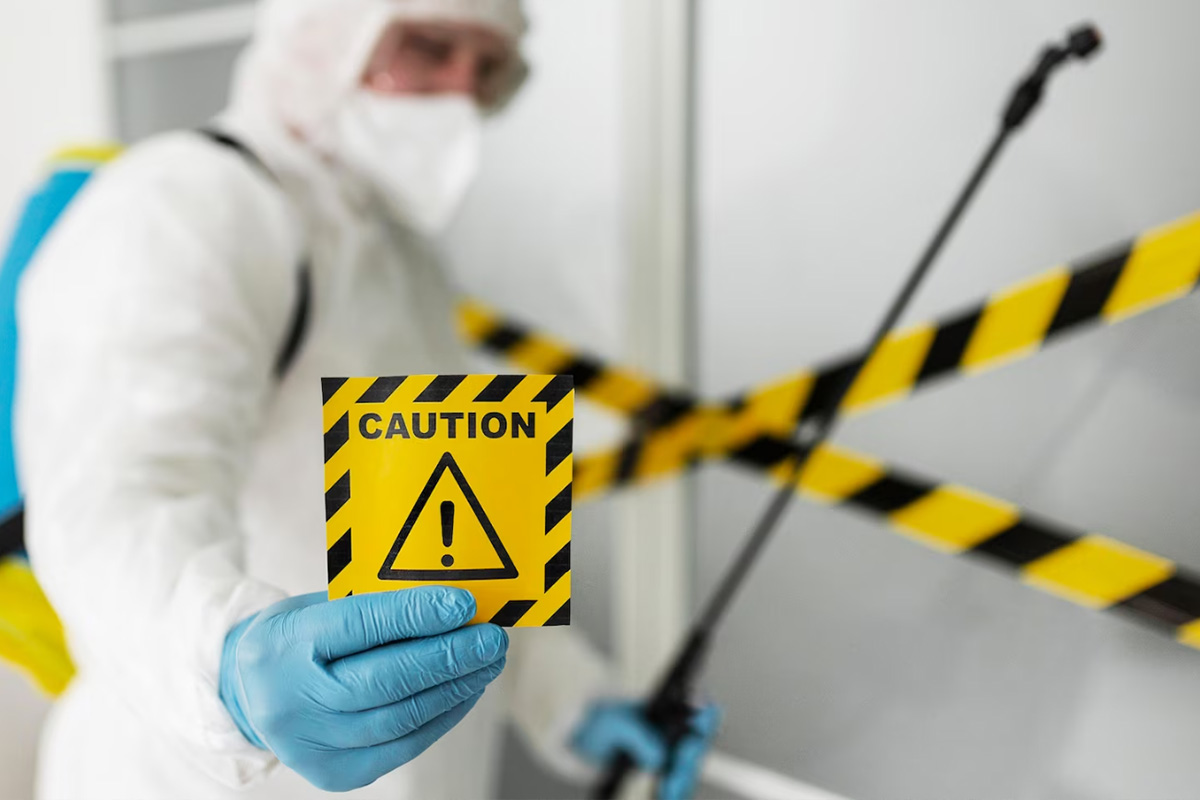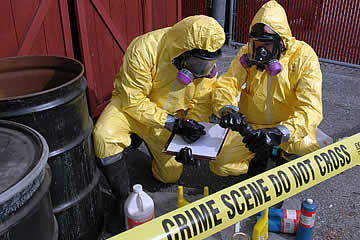Clandestine Lab Cleanup: Comprehensive Purification for Hazardous Sites
Clandestine Lab Cleanup: Comprehensive Purification for Hazardous Sites
Blog Article
Professional Biohazard Cleansing and Purification for Blood, Bodily Fluids, and Hazardous Materials
The possible wellness threats connected with direct exposure to biohazards highlight the important need for meticulous handling and comprehensive clean-up. As we navigate the elaborate landscape of biohazard cleanup, understanding the nuances of policies, conformity, and the specialized tools at play ends up being vital in guaranteeing a safe and comprehensive decontamination process.
Health And Wellness Risks of Biohazard Exposure
Direct exposure to biohazards positions significant health dangers that can lead to extreme repercussions for individuals and communities alike. Biohazards incorporate a large range of organic substances, consisting of blood, physical liquids, mold, bacteria, viruses, and other possibly transmittable products. When individuals enter into contact with these biohazards, whether with mishaps, incorrect handling, or environmental exposure, they encounter the danger of having serious ailments or illness.
Among the primary health and wellness risks related to biohazard exposure is the transmission of infectious diseases. Bloodborne microorganisms such as HIV, hepatitis B and C, and numerous germs can be present in biohazardous products, presenting a direct threat to human health and wellness. Inhaling air-borne biohazards like mold spores or entering into contact with contaminated surface areas can also result in respiratory system issues, allergic reactions, and various other negative wellness effects.
Moreover, biohazard direct exposure can have long-term wellness effects, with some conditions manifesting years after the preliminary call (Blood Cleanup). Therefore, it is vital to focus on proper biohazard cleaning and purification to mitigate these health and wellness risks and ensure the safety and security of areas and people

Specialized Educating for Biohazard Cleaning
When it pertains to handling biohazard cleaning efficiently and safely, specialized training plays a basic function in making certain proper purification treatments are adhered to. Biohazard clean-up needs particular expertise and skills to properly reduce dangers linked with bloodborne pathogens, physical liquids, and dangerous materials. Specialists educated in biohazard cleanup go through strenuous direction on exactly how to securely manage, remove, and dispose of biohazardous materials to stop contamination and exposure.
Specialized training for biohazard cleaning covers a range of crucial topics, including proper individual protective devices (PPE) usage, bloodborne virus recognition, purification techniques, and contaminated materials disposal methods. Individuals trained in biohazard cleaning are furnished with the needed experience to evaluate contamination levels, identify prospective risks, and execute appropriate clean-up procedures in compliance with regulatory standards.
Constant training and education are paramount in the field of biohazard clean-up to remain updated on the current purification technologies, security methods, and regulations. By purchasing specialized training, biohazard clean-up specialists can effectively react to emergency cleaning circumstances and secure both public wellness and the setting.
Significance of Correct Decontamination Strategies
Utilizing correct purification strategies is important in biohazard clean-up to properly remove harmful products and reduce health and wellness dangers. Efficient decontamination not just makes sure additional info the elimination of visible traces of blood, physical fluids, and other biohazards yet also targets unnoticeable microorganisms that might posture significant wellness dangers otherwise correctly gotten rid of. By following strict decontamination protocols, educated professionals can significantly lower the threat of direct exposure to harmful microorganisms, viruses, and microorganisms that might lead to infections or diseases.
Appropriate purification strategies include the usage of specialized devices and anti-bacterials that are specifically created to reduce the effects of biohazards efficiently. Complete cleansing and sanitation of polluted locations are vital to protect against the spread of microorganisms and make sure a safe atmosphere for occupants. Furthermore, the appropriate disposal of biohazardous waste complying with purification procedures is essential in preventing contamination of other surfaces or individuals.

Tools and Tools for Safe Cleanup
When dealing with blood, physical liquids, or harmful materials, biohazard cleansing specialists rely on specialized equipment to minimize direct exposure threats and thoroughly decontaminate the damaged area. In addition, biohazard cleaning kits consisting of disinfectants, absorptive materials, and biohazard bags are utilized to safely get rid of and contain of polluted products.
Advanced cleaning devices like hospital-grade anti-bacterials, HEPA-filtered vacuums, does ammonia clean up blood and fogging makers are used to disinfect surface areas and get rid of biohazards successfully. Specialized tools such as sharps containers and biohazard garbage disposal containers are used to safely manage sharp things and biohazardous waste products. By using the ideal tools and devices, biohazard cleaning experts can ensure a thorough cleaning procedure that prioritizes safety and security and reduces health and wellness threats for both workers and occupants of the damaged room.
Rules and Compliance in Biohazard Cleansing
Proper adherence to guidelines and conformity criteria is critical in biohazard cleansing to make sure the safety and security of both workers and the environment. Federal government agencies such as OSHA (Occupational Security and Wellness Management) and the EPA (Environmental Security Company) have developed certain guidelines for biohazard cleaning treatments to decrease health dangers and ecological contamination. These regulations cover a variety of aspects including the handling, transportation, and disposal of biohazardous materials, along with the needed training and protective tools required for personnel entailed in the clean-up procedure.
Biohazard cleaning companies need to remain current with these laws to assure that their procedures fulfill the required security requirements. Failure to follow these regulations can result in severe repercussions, consisting of penalties, lawsuit, and threatening the wellness of people and the atmosphere. By following strict laws and conformity steps, biohazard cleaning companies can successfully reduce dangers and make sure a detailed and risk-free clean-up procedure for all events included.
Final Thought
In verdict, biohazard cleaning and purification require specialized training, appropriate methods, and adherence to regulations. Direct exposure to blood, bodily liquids, and dangerous materials poses considerable health risks, making it critical to utilize the appropriate devices and devices for secure clean-up. By adhering to rigorous methods pop over to these guys and guidelines, professionals can effectively minimize the threats related to biohazard exposure and ensure the safety of both themselves and others.
As we navigate the intricate landscape of biohazard cleanup, recognizing the subtleties of policies, compliance, and the specialized equipment at play comes to be essential in guaranteeing a secure and comprehensive purification process. (Blood Cleanup)
When it comes to dealing with biohazard cleaning successfully and safely, specialized training plays a basic duty in making certain appropriate purification procedures are followed.Making use of proper decontamination techniques is important in biohazard clean-up to efficiently remove hazardous materials and lessen health and wellness threats. In addition, biohazard cleaning kits including anti-bacterials, absorbent products, and biohazard bags are used to securely consist of and dispose of contaminated items.
Federal government companies such as OSHA (Occupational Security and Health And Wellness Management) and the EPA (Environmental Defense Agency) have actually developed certain standards for biohazard cleanup treatments to lessen wellness risks and environmental contamination.
Report this page